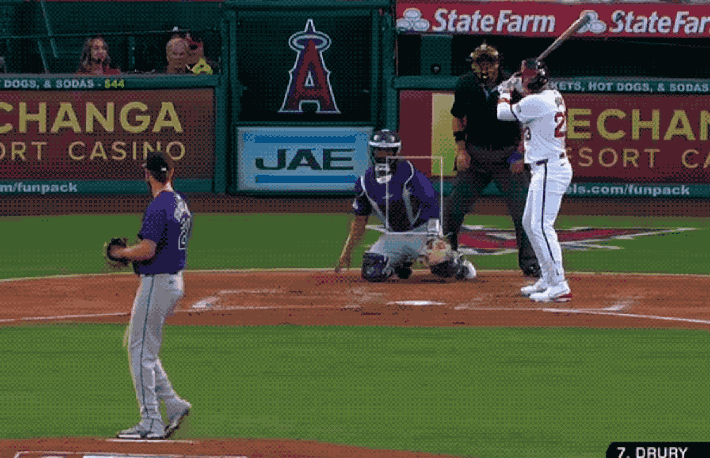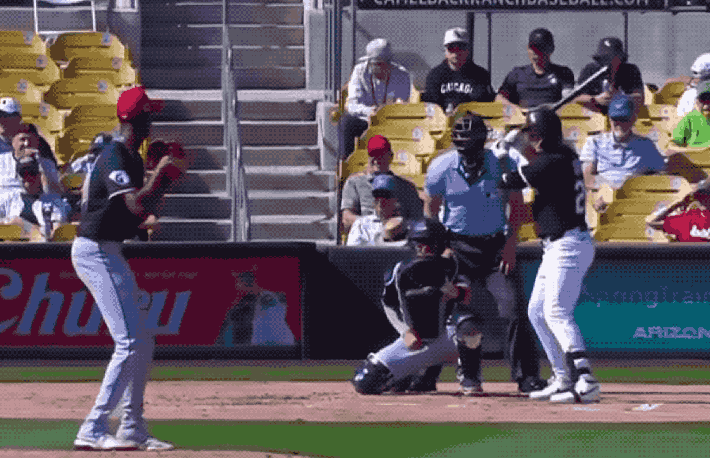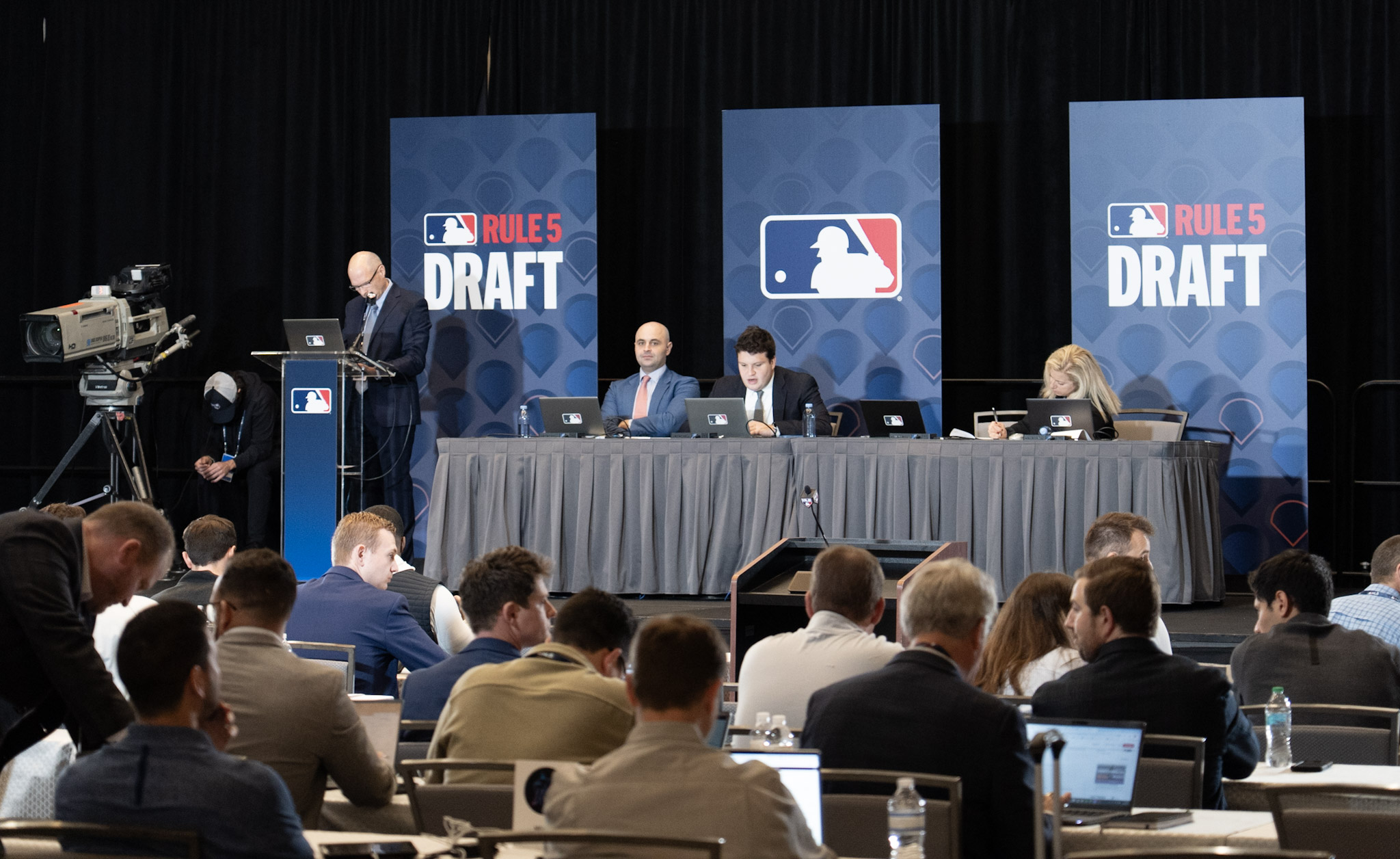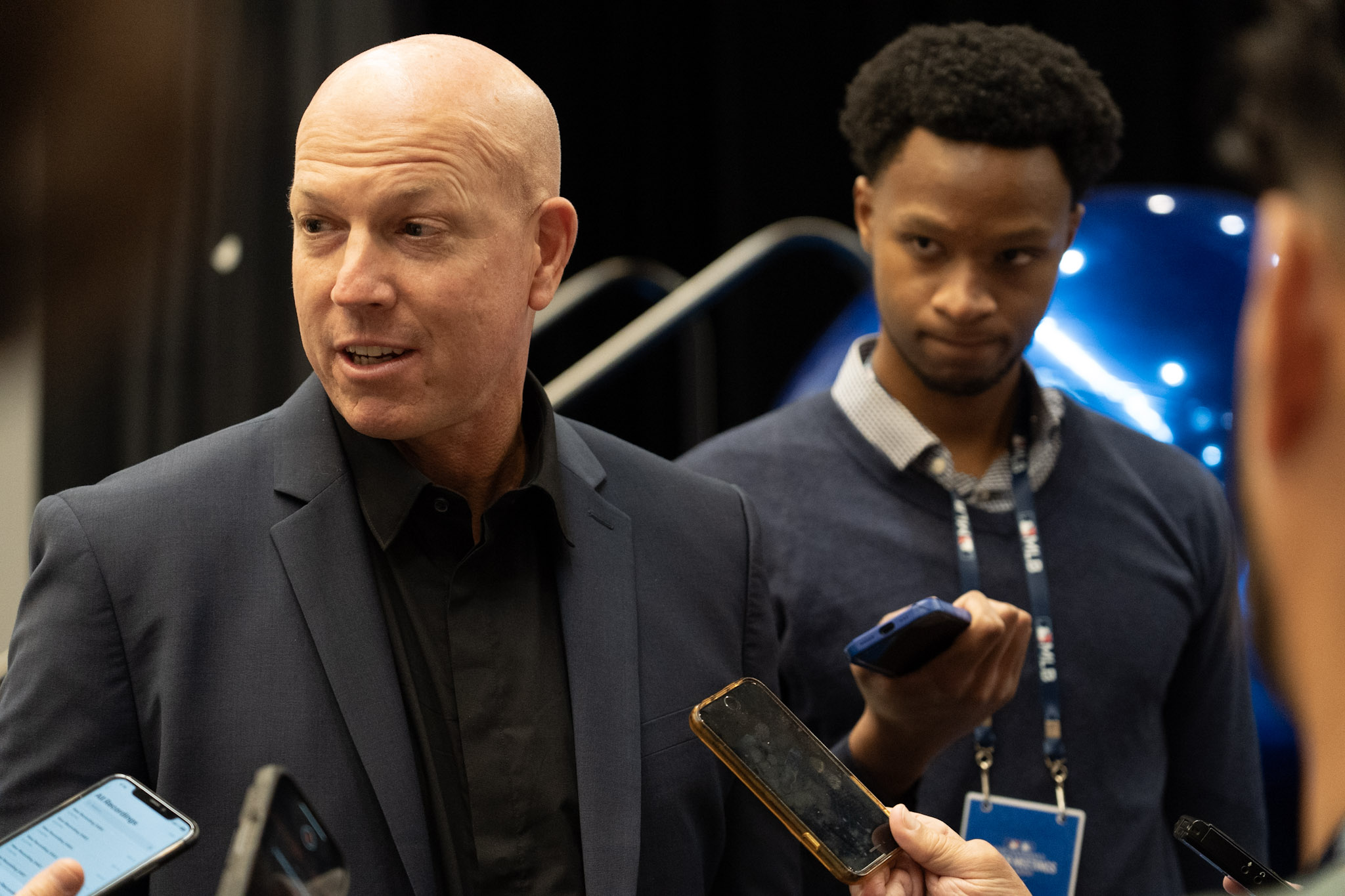I, the author, like to believe I can assess the capabilities of players by statistical and video analysis. And you, the reader, like to believe there's something qualitative to be gleaned from a few snippets of Cactus League baseball.
Together, let's combine our hubris to assess whether the White Sox have something in non-roster invite Brandon Drury. First of all, they probably do, from a statistical probability standpoint.
From 2021-23, Drury hit .263/.313/.493 (118 wRC+) in just under 1,200 plate appearances; the equivalent of two full seasons of at-bats as a well-above average hitter. At age 31 (he turned 32 in August), Drury had an aberrantly awful 2024 campaign at the plate, hitting .169/.242/.228 in 360 plate appearances. He dealt with a hamstring strain and a respiratory infection and acknowledged those factors hampered him, but the Angels also ran him out there to accumulate a very large sample of not driving the baseball. Drury's value is primarily driven by power, so such an outage put him in the range of a taking minor league deal with the White Sox.
"I feel like it was a good place to come," Drury said of signing with the Sox. "I spoke Marcus [Thames] this offseason a good amount about the things we're trying to do to get back on track, like the 2023 season. Took a lot of work, took a lot of time in the cage."
But because there's such a recent and meaningful sample of Drury hitting for consistent power (54 home runs over 2022-23), we don't need to be as skeptical about a small sample of looking the part. At age 32, most statistical models will prepare you for a season where some decline is visible, but a total dissolution of his major league ability isn't very likely unless a career-altering injury is at work. FanGraphs' Steamer projection has Drury rebounding to a 94 wRC+, and Baseball Prospectus' PECOTA sees him returning to an 89 DRC+, a below-average, fringe roster player, but also about twice as good as he was last year. That's not based on any notion of Drury's personal improvement, but simply on the basis that players as good as him don't decline as quickly as 2024 would have you believe.
Luckily not only did Drury say he's healthy, but he offered a hint of what temporary condition was at work for such an atypical collapse.
"Getting healthy is No. 1, but then I was also getting back to simplifying things," Drury said. "In the '22 and '23 seasons, I limited my movement forward and tried to keep my swing as simple and short as I can. I had gotten away from that over the last year going for exit velo. Go back to what worked and tried to keep it as simple and short as possible.
"I was moving forward too much trying to hit the ball too hard, and that doesn't work for me. I need to put myself in position to repeat my swing and hit the barrel."
And what a relief that he did. Can you imagine how long you might have spent trying to pick out the difference between these if Drury had not already clued us to look at how far out his front foot is striding?


Hell hath no fury like a player who feels a mechanical tweak threw them off, and the way Drury refers to exit velocity could trick you into believing the metric itself is the boogeyman, when really his complaint is more targeted. Every player wants to hit the ball harder, but in striding forward to create more force, Drury feels he found the breaking point where his timing and ability to drive the ball in the air was completely undermined. He actually set a new career-high for maximum exit velocity in 2024, but the juice wasn't worth the squeeze.
"He was trying to chase exit velo and I said 'let's just chase consistency,'" said hitting coach Marcus Thames, who worked with Drury with the Angels when he hit 26 home runs in 2023. "If you do that, all the other stuff will happen."
The other thing that makes Drury an easy case, beyond that he was basically a good player for multiple years and we're just checking if he's back to normal, is that he was so awful in 2024 that it's easy to see if the baselines have changed.
The fact that Drury is hitting .346/.370/.654 in 27 plate appearances sounds very great obviously, but to put it in another more jarring way: He struggled to drive the ball so much last season that he only collected 11 extra-base hits in 97 games. He's at six extra-base hits for this spring while appearing in most of nine games. We don't know if he can return to 2021-23 based off this, but it seems pretty clear his game is in a different spot than it was in 2024.
What's better is that Drury went so far as to point us to other indicators within the early results, saying that the most telling sign to him that his mechanics were off in 2024 was that he was struggling to elevate the ball even in batting practice. And since we know he's a right-handed power hitter, pulling the ball is probably pretty important for him too.
| Drury | AVG | OBP | SLG | ISO | GB% | Pull% |
|---|---|---|---|---|---|---|
| 2021-23 | .263 | .313 | .493 | .230 | 42.4 | 45.2 |
| 2024 | .169 | .242 | .228 | .058 | 57.1 | 36.8 |
| Spring 2025 | .346 | .370 | .654 | .308 | 31.8 | 47.8 |
Are the spring results statistically significant after 27 plate appearances? Absolutely not. Is the sample of balls in play actually even smaller than that because he's walked or struck out four times? That's correct. Don't his 2021-23 numbers suggest this is an unsustainable heater? That's literally the reason why they're displayed.
But what we do have here is an established hitter coming off a down year that looked extremely unlike his previous three seasons of work. And because those two samples are so distinct looking, it's already pretty easy to say that compared to the disastrous campaign that brought him here, Drury is looking more like his old self these days.
"No doubt," Drury said. "When I take my normal A-swing my ball is going in the air consistently, without trying to lift it. That's when I knew my mechanics and my A-swing was back."






